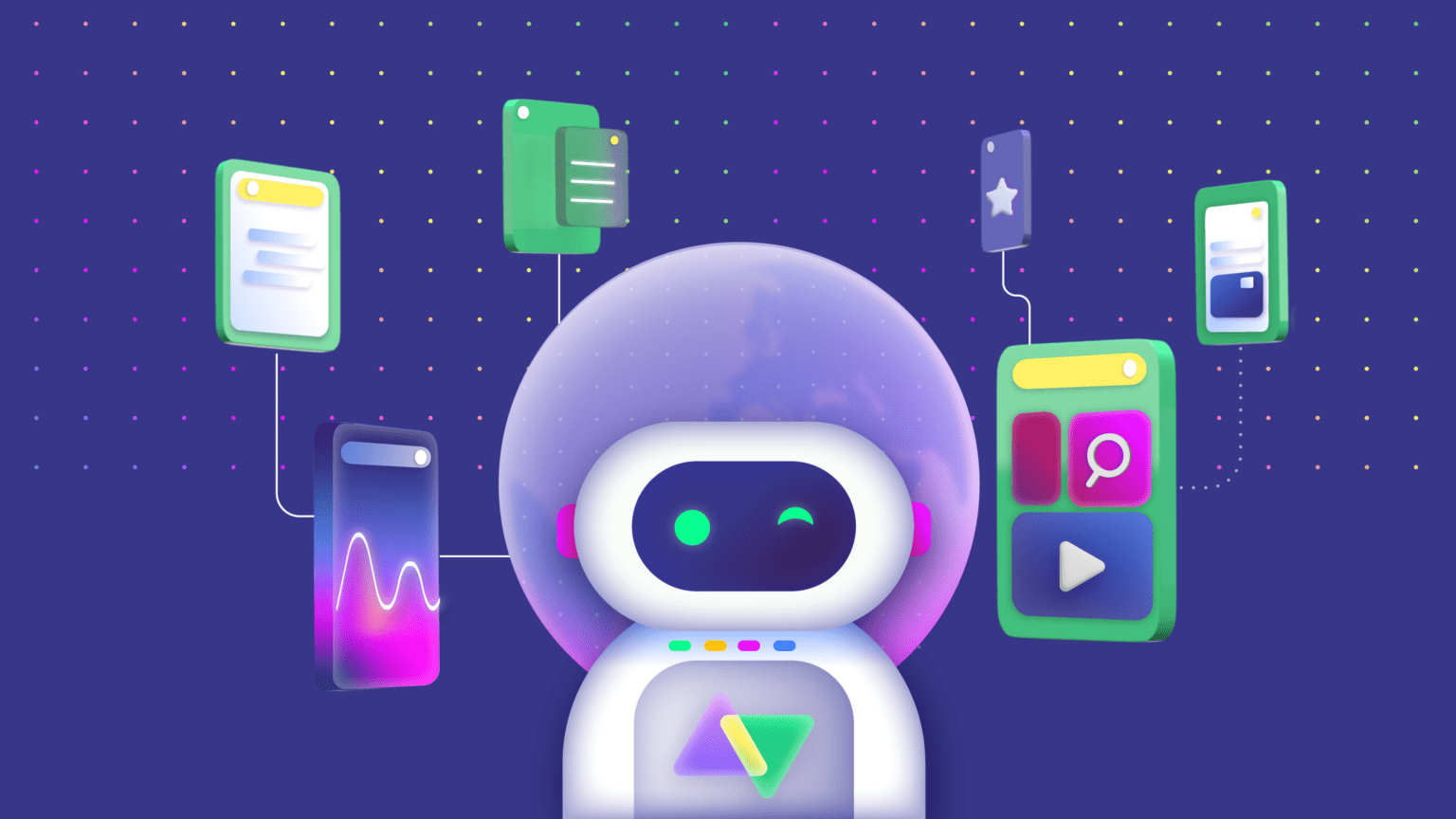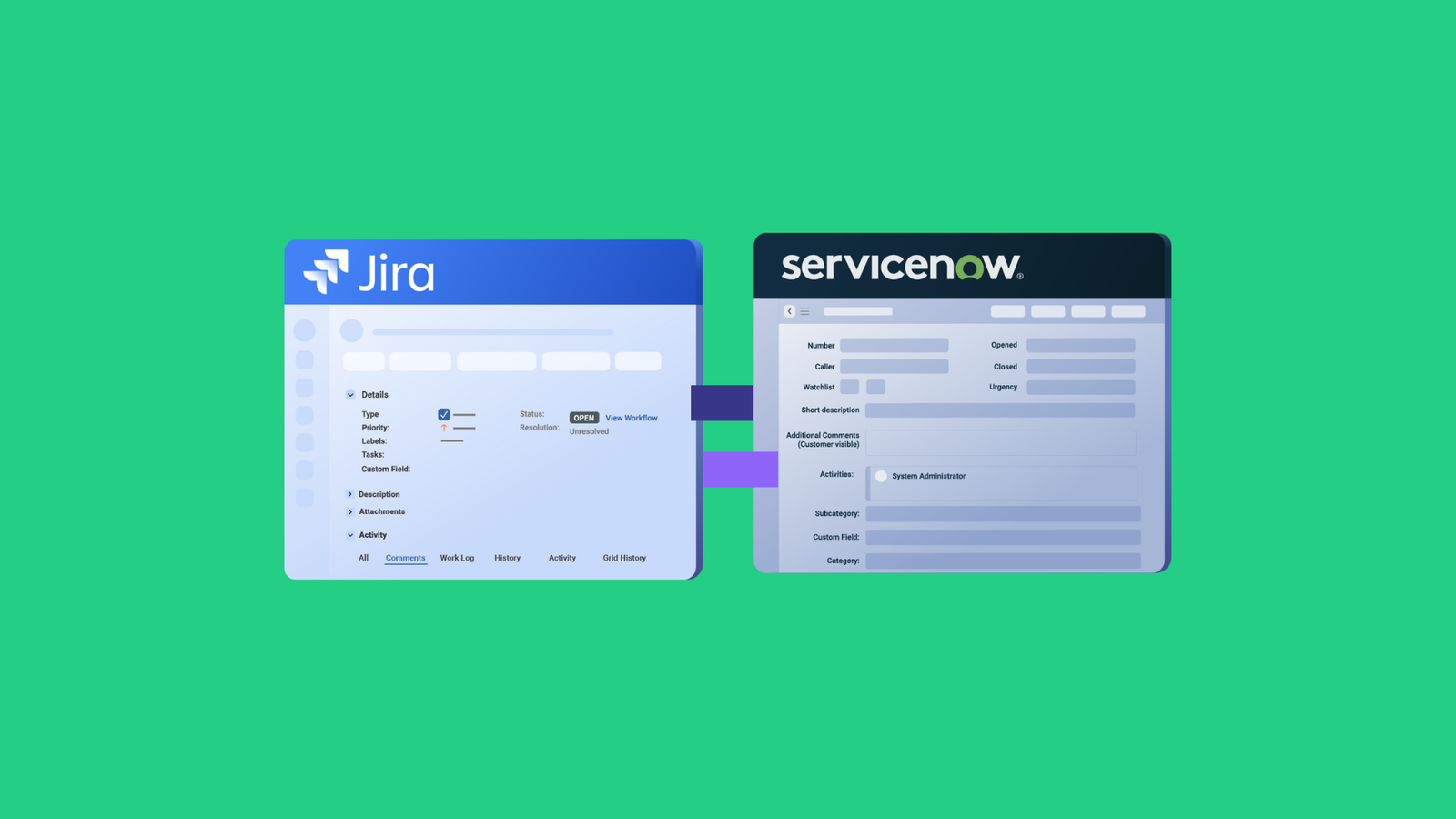Traditional workplaces were characterized by physical offices, fixed working hours, and localized teams.
Technology progressed and organizations became inclined towards digital transformation. Rigid hierarchical team structures became more dynamic and distributed.
This digital age brought in a shift towards flexibility and connectivity, making the way for remote work environments.
At the same time, businesses began to rely heavily on work management systems to handle daily activities, implement projects, and respond to customer needs. Teams using these systems, however, started becoming siloed.
As businesses become more specialized, these globally siloed teams using different systems wanted to find a way to collaborate effectively. They were also seeking the same efficiency levels they had in traditional workplaces without hampering team dynamics.
Their focus was on finding an automatic mechanism for exchanging the required information everyone needed.
Integration was an answer to this quest.
This integration began by connecting teams within different departments. And then as the demand grew, companies realized they could extend the benefits of their internal integrations to their partnerships with other companies.
Cross-company integration came into the picture!
The Rise of Cross-company Integration
Cross-company integration (CCI) is connecting diverse systems across multiple companies.
This concept isn’t merely about linking different systems but involves a comprehensive approach to connecting remote teams, establishing clear processes between them, and using technology to aid communication across organizational boundaries.
It involves exchanging information based on the requirements of various stakeholders, ensuring tasks created in one system can be efficiently addressed in another.
Given the complexities and costs associated with building and maintaining CCI, many companies started to turn toward third-party integration providers.
These vendors specialize in creating, configuring, maintaining, and scaling integrations, offering a more manageable and secure solution.
Building a Worldwide Network of Connected Companies
Exalate started off as one such integration provider that allowed teams to connect with each other in a peer-to-peer fashion, meaning one entity connecting to a single other entity.
Entity in this case can be a company, a department, two different teams, or the same team working on different projects.
Within a few years, we saw a growth in companies wanting to connect to multiple other companies either establishing a one-to-many, many-to-one, or many-to-many relationship, while having the freedom to orchestrate their integration the way they want. Security was always a top priority.
We realized the more the number of connections these companies form with their partners, suppliers, customers, or vendors, the more value their integration brings.
It also enhances the trust, empathy, and transparency in their relationships forming a stronger and more ever-lasting bond.
Building upon this concept, we shaped the vision at Exalate.
We aim to build a worldwide network of connected companies, where organizational boundaries blur and communication lines grow stronger.
But there’s more to it than simply a vision.
The Future of Work: Collaboration Beyond Boundaries
Cross-company integration built across a worldwide network aims to redefine the way work is meant to happen.
It streamlines communication across organizations at the push of a button.
It aims to align modern collaborations with modern integration demands like distributed, agile, loosely coupled, secure, and scalable integration.
It allows companies to extend their workflows and collaborate efficiently with external teams, mirroring internal team dynamics.
The future of work is driven by the need for efficiency, innovation, and the ability to respond swiftly to market changes.
The integration market has changed significantly with low-code approaches, pre-built connectors for common applications, and templates for typical scenarios.
The Artificial intelligence (AI) boom over the past few years is a force to drive this market even further by allowing people-focused values to be at the forefront.
When integration is combined with the power of AI, it changes the equation at workplaces even further.
The Role of AI in Cross-Company Integration
So what transformative role does AI play in facilitating cross-company integration?
McKinsey reports that AI adoption is accelerating rapidly, with the potential to significantly impact global GDP. By 2030, approximately 70% of companies might adopt some form of AI technology, compared to about 33% today. The report also emphasizes the competitive advantage for early adopters, who could see substantial increases in productivity and profitability.
Traditionally, users set up their integrations with the help of technical resources or from the software vendors themselves. For easy-to-implement scenarios, they use predefined templates. However, for complex scenarios, a lot of back and forth is required to set up a working integration.
AI-assisted integration makes this simpler. It converts natural language commands into low-code integration scripts or templates that you can directly apply to your connection.
Let’s delve into the specifics.
AI can help cross-company integration in the following ways:
- Providing a means to gather explicit integration requirements from all the involved stakeholders
- Crafting specified integrations between systems with simple or natural language user prompts
- Ensuring the security of the integration is maintained based on the requirements of all companies
- Identifying templates for use cases
- Enabling a 360-degree view of how the integrated environment looks like
- Coupling it with advanced monitoring, reporting, and analysis to ensure the integration is reaping the benefits envisioned initially
- Giving cool insights on how integrations could evolve or scale
- Aiding self-starters via integration templates that can be reused to build DIY connections
Benefits of AI-based Integration
AI-assisted integration offers numerous benefits, transforming how businesses handle data and processes. Here are some key advantages:
Improved Accuracy
AI minimizes human errors in integration. With machine learning algorithms, the system can learn from past mistakes and continuously improve, ensuring data integrity and reliability.
Scalability
AI-assisted integration can handle increasing amounts of data and complexity without requiring a proportional increase in resources. This scalability is important for growing businesses and those experiencing fluctuating data volumes.
Cost Reduction
Automation through AI reduces the need for extensive manual labor and the associated costs. Moreover, AI systems can operate 24/7, providing continuous integration services without additional labor costs.
Predictive Maintenance
AI can predict potential issues in the integration process before they occur, allowing proactive maintenance and reducing downtime. This predictive capability ensures smoother operations and minimizes disruptions.
Intelligent Insights
By analyzing integrated data, AI can uncover hidden patterns and insights that might be missed by human analysis. These insights can drive strategic decision-making and uncover new business opportunities.
Flexibility and Adaptability
AI systems can adapt to changes in business processes and data structures more quickly than traditional integration methods. This flexibility ensures that integrations remain relevant and effective even as business needs evolve.
Challenges in AI-assisted Integration
However, even though AI seems to be a lucrative proposal, it’s important to understand the challenges it brings along.
- Translating information between custom systems and developing a common language for seamless communication
- Creating standards similar to HTTP
- Gathering data and ensuring it’s accurate and consistent
- Ensuring clear and accurate information exchange paths
- Avoiding biased outcomes or AI hallucinations
- Ensuring integration security
- Connecting and including legacy systems in AI endeavors
The transition to smart integration with AI technology is not easy. It includes rethinking your entire integration strategy and staying ahead in a competitive data-driven world.
Conclusion: Shaping the Future Together
As workplaces evolve from traditional settings to dynamic, distributed teams, there is a need for flawless collaboration across company boundaries.
The future of work is intertwined with AI-driven cross-company integration. AI simplifies integration by converting natural language commands into actionable scripts, improving accuracy, scalability, and cost efficiency.
The benefits of AI-assisted integration are clear: smarter workflows, predictive maintenance, and insightful analytics.
Incorporating AI in your integration effort not only optimizes operations but also sets the stage for a more connected and agile business workplace.
Recommended Reading:
- Automated Integration: A Key to Scalable and Agile Business Operations
- Sustaining an Effective Collaboration in Time of Remote Work
- Integration Security: Key Measures and Best Practices for Enterprises
- How Vodafone Optimized its Operational Efficiency and Costs through Automating Cross-company Integration with Exalate
- Transforming Business Dynamics: The Power of Cross-Company Integration with Exalate



